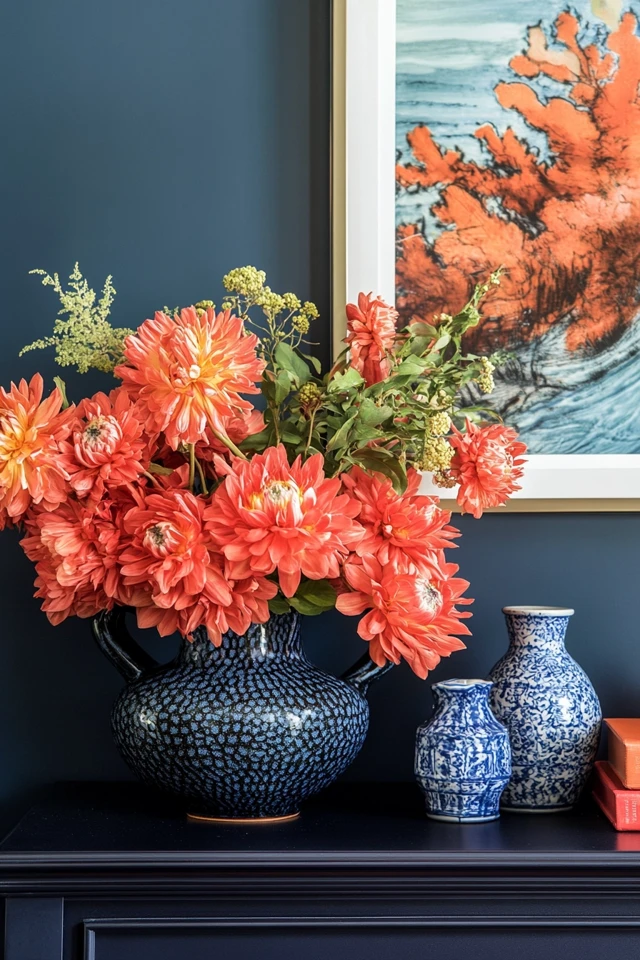Introduction
When it comes to decorating, it’s often the small accents and details that make the biggest impact. While larger furniture pieces like sofas and dining tables set the stage, it’s the small decor—vases, candles, art, and other accessories—that truly brings a space to life. However, these little touches can sometimes fade into the background if not displayed thoughtfully. So how do you ensure that your small decor doesn’t just complement your design but also stands out and adds personality to your space?
I first realized the power of small decor when decorating my coffee table. I had a beautiful hand-painted vase from a trip abroad, but it kept getting lost among the larger items in the room. By elevating it on a stack of books, adding a small gold tray, and pairing it with a candle, the vase suddenly became a focal point. It transformed not only the table but the entire room, proving that even the smallest items can pack a big design punch when styled effectively.
In this guide, we’ll dive into the secrets of making small decor pop. Whether you’re working with a minimalist design or a maximalist approach, these tips will help you elevate your accessories, add layers of visual interest, and make every piece in your home feel intentional and impactful.
The Perfect Design for You
These strategies are perfect for anyone who:
- Loves collecting small decorative items and wants to showcase them effectively.
- Feels their accessories get overshadowed or lost in the overall design.
- Wants to add character and personality to their space through thoughtful details.
- Appreciates the charm and versatility of small accents but struggles to make them stand out.
Picture a sleek console table where a small sculptural object is perfectly balanced with a stack of design books and a ceramic bowl. Or imagine a gallery wall where small framed prints and mirrors draw the eye without feeling overcrowded. Small decor, when styled thoughtfully, has the power to anchor a room and create moments of visual delight.
Whether you’re decorating a bookshelf, coffee table, or entryway, learning how to make small decor pop will help you elevate your space and express your unique style.
Picture Gallery
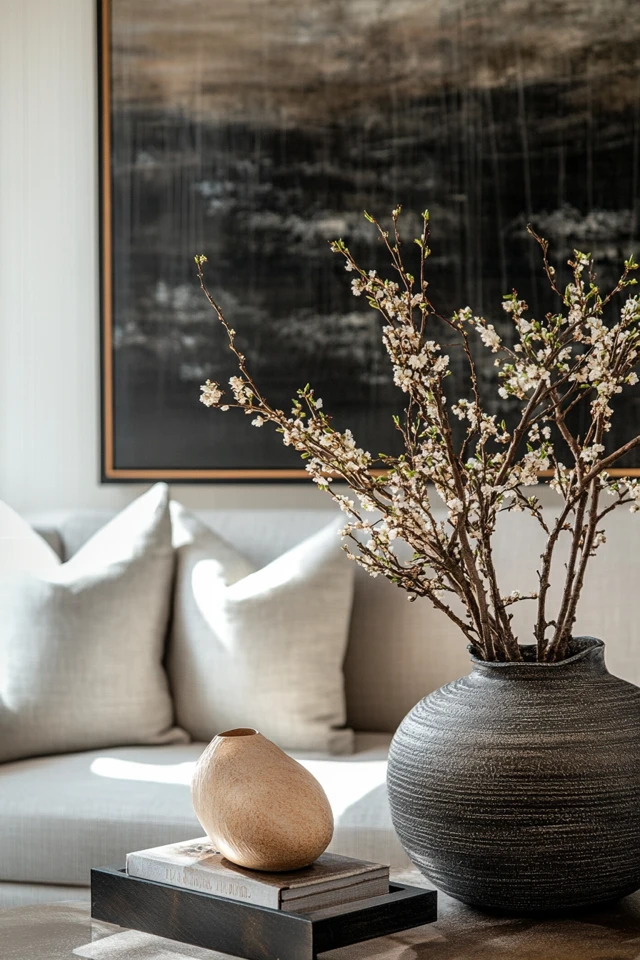
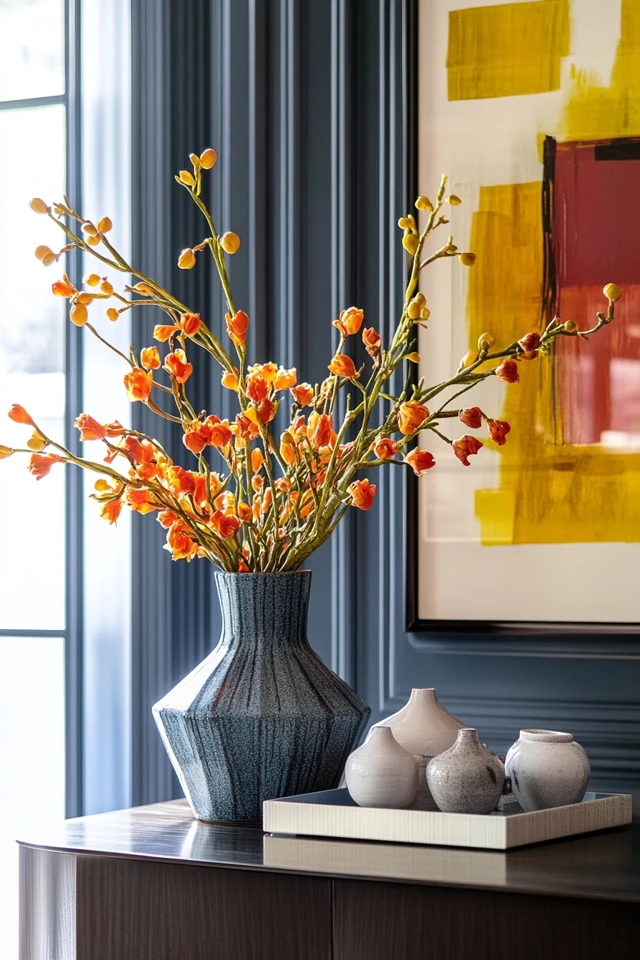
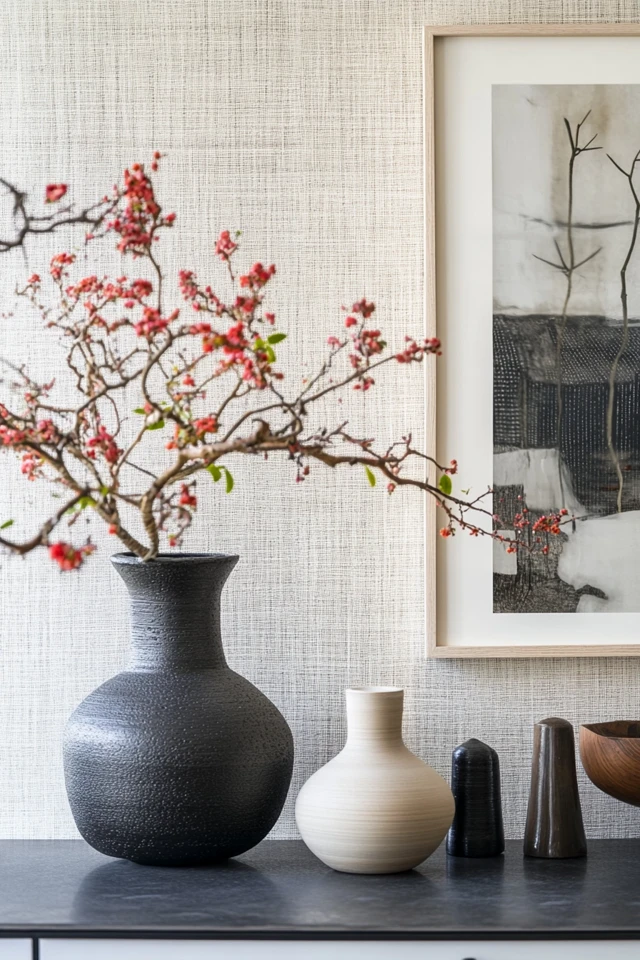
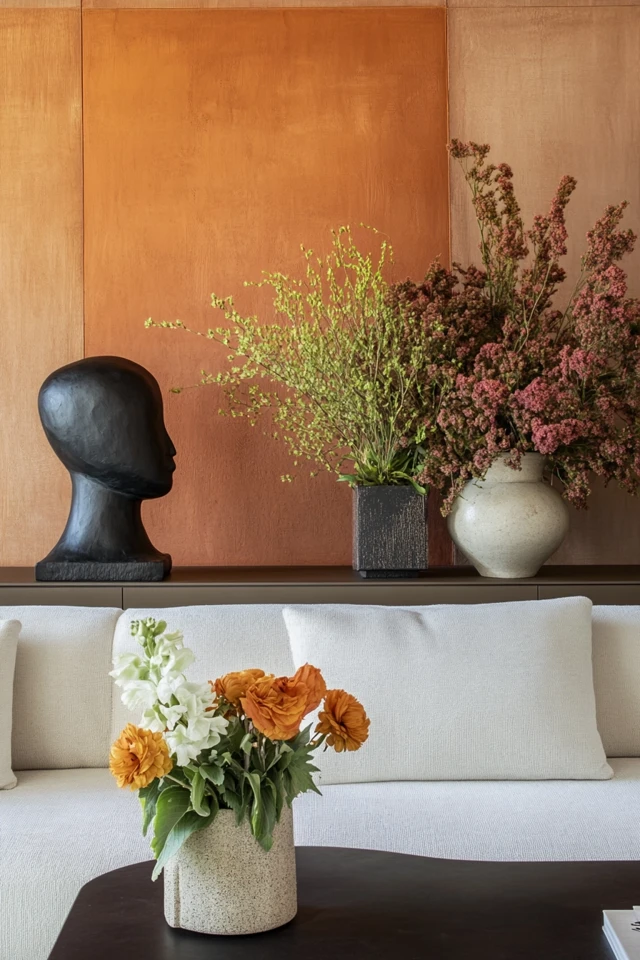
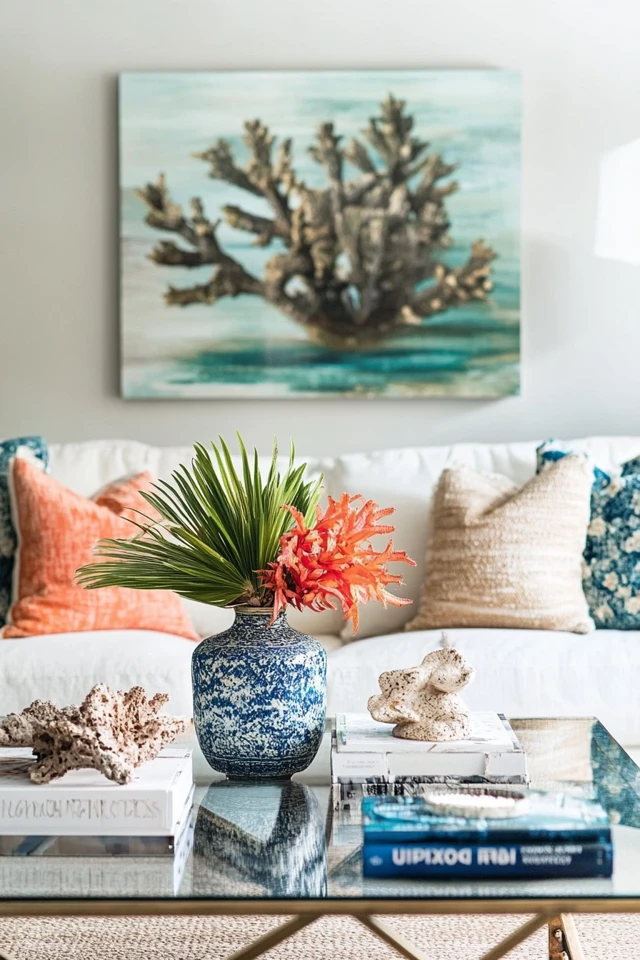
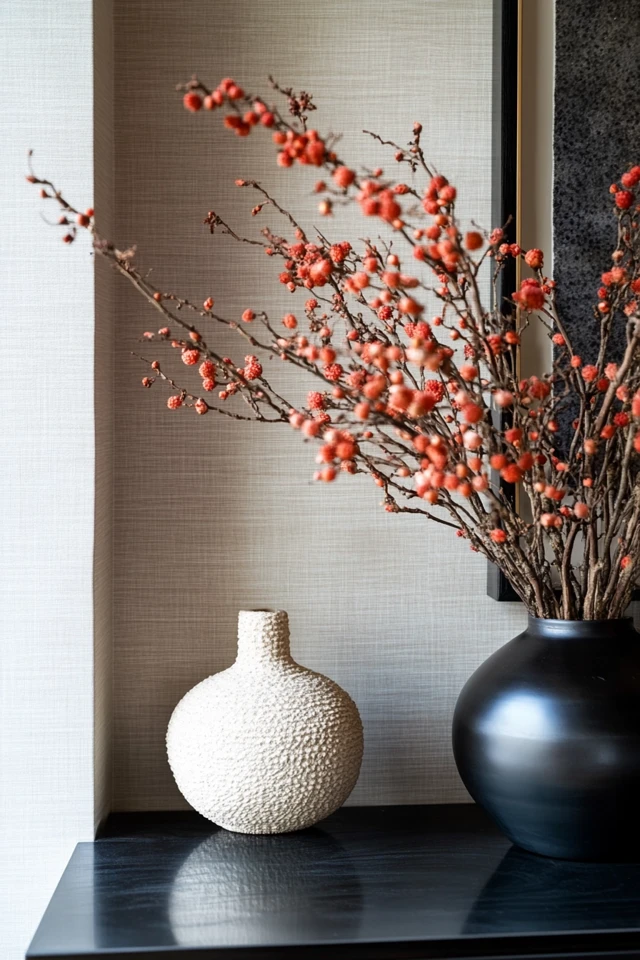
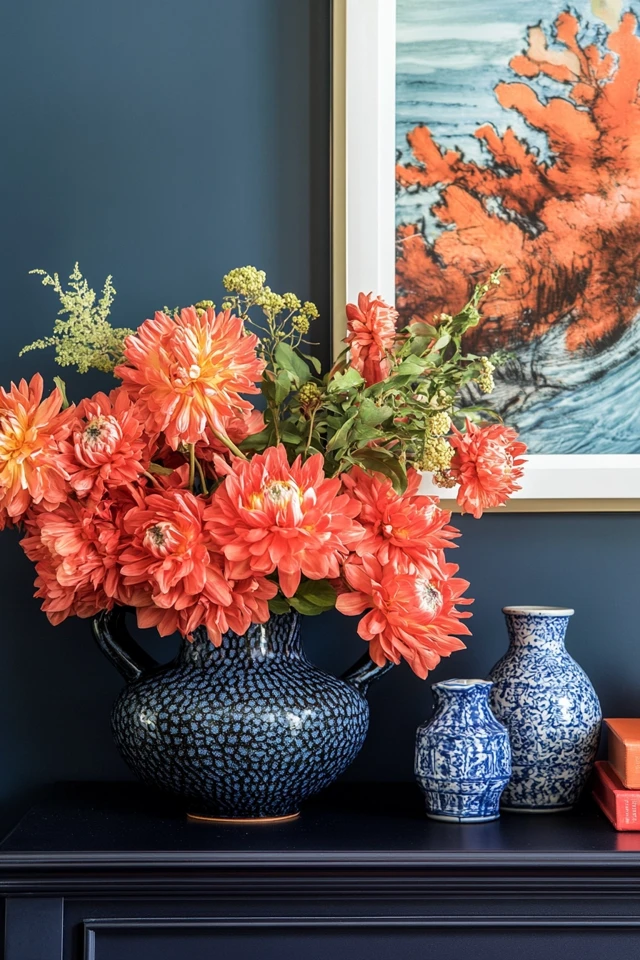
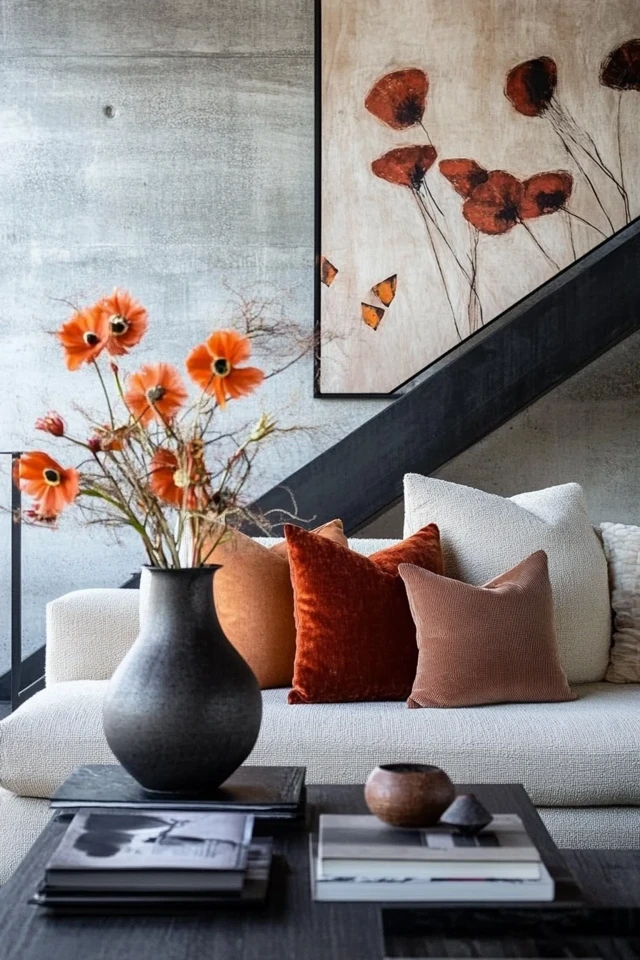
Why Small Decor Matters
Small decor items are more than just finishing touches—they’re the elements that add depth, personality, and warmth to a space. Here’s why they’re so essential:
- Adds Personality: Small accents often reflect your personal tastes and experiences, making your space feel uniquely yours.
- Creates Layers: By varying the height, texture, and color of small decor, you can add dimension and interest to flat surfaces.
- Encourages Focus: Thoughtfully placed small items draw the eye and guide attention to specific areas of a room.
- Balances Large Pieces: Small decor helps soften and complement larger furniture, ensuring a cohesive look.
- Offers Flexibility: Unlike big-ticket items, small decor is easy to swap out, rearrange, or update seasonally.
Interior designers often refer to small decor as the “jewelry” of a room. Just like the right earrings or necklace can elevate an outfit, the right accessories can enhance your space and tie the entire design together.
How to Make Small Decor Pop: Step-by-Step
1. Choose a Theme or Style
- Start by deciding on an overarching theme or style for your small decor:
- Minimalist: Stick to a few carefully chosen pieces with clean lines and neutral tones.
- Eclectic: Mix and match styles, colors, and textures for a curated, layered look.
- Natural: Focus on organic materials like wood, stone, and ceramics for a calming, earthy vibe.
- A clear theme ensures that your small decor feels cohesive rather than random.
- Example: In a bohemian living room, small decor might include woven baskets, hand-thrown pottery, and colorful textiles.
2. Use Grouping to Create Impact
- Group small items together to create visual interest and prevent them from feeling lost:
- Follow the “rule of three” by grouping items in odd numbers for a more dynamic arrangement.
- Vary the height and size of items within each group for balance and contrast.
- Use a tray or decorative bowl to anchor smaller objects and keep them organized.
- Example: On a coffee table, group a tall candle, a medium-sized vase, and a small sculpture on a tray to create a cohesive vignette.
3. Play With Scale and Proportion
- Contrast small decor with larger items to emphasize their presence:
- Use a small accessory to balance a bold statement piece, like a large mirror or lamp.
- Pair tiny items with medium-sized decor to avoid them feeling out of place.
- This juxtaposition helps small items stand out without being overshadowed.
- Example: On a console table, a small ceramic bird placed beside a tall lamp and a medium-sized picture frame creates a balanced and interesting display.
4. Incorporate Layers and Levels
- Use layering to give small decor depth and dimension:
- Elevate items on books, pedestals, or stacked boxes to vary their height.
- Layer items in front of and behind each other for a more dynamic arrangement.
- Create depth by combining wall-mounted decor with tabletop items.
- Example: On a shelf, place a framed photo leaning against the wall, a small potted plant in front of it, and a decorative candle alongside to create a layered look.
5. Choose a Focal Point
- Highlight one standout piece of small decor in each display:
- Select an item with a bold color, unique shape, or intricate detail to draw attention.
- Surround the focal piece with subtler items that complement it.
- This approach ensures your display feels intentional and balanced.
- Example: On a bedside table, a vibrant blue vase becomes the focal point, surrounded by a simple stack of books and a neutral lamp.
6. Play With Texture and Material
- Combine different textures and materials to create contrast and interest:
- Pair shiny metallics with matte ceramics or smooth glass with rough wood.
- Mix soft textiles like woven baskets with hard materials like stone or concrete.
- Texture adds depth and prevents small decor from blending into the background.
- Example: On a kitchen countertop, a smooth marble tray with a textured woven basket and a glossy ceramic jar creates a tactile, layered look.
7. Use Color to Make Decor Pop
- Choose small decor in bold or complementary colors to make it stand out:
- Use color to create contrast against neutral furniture or walls.
- Tie colors together across the room for a cohesive look.
- For a subtle effect, use variations of one color (monochrome) in your small decor.
- Example: In a neutral-toned room, a bright yellow vase immediately draws the eye and adds a cheerful pop of color.
8. Utilize Negative Space
- Give small decor room to breathe by embracing negative space:
- Avoid overcrowding surfaces—space between items enhances their individual impact.
- Let small pieces shine by keeping their surroundings simple and uncluttered.
- Negative space allows small decor to feel intentional rather than overwhelming.
- Example: On a mantel, display just two or three small items, leaving ample blank space around them for a minimalist, curated look.
9. Experiment With Placement
- Get creative with where you display small decor:
- Place items on unexpected surfaces like windowsills, radiator covers, or staircase landings.
- Rotate decor seasonally to refresh the space and keep it feeling new.
- Incorporate wall-mounted shelves or floating ledges to showcase small decor without taking up floor space.
- Example: In a bathroom, place a small candle and a tiny succulent on the back of the toilet tank for a polished yet functional touch.
10. Incorporate Lighting to Highlight Decor
- Use lighting to emphasize your small decor and make it pop:
- Position items near natural light sources like windows to draw attention.
- Install spotlights, picture lights, or LED strips to illuminate displays.
- Use reflective surfaces like mirrored trays or metallic finishes to amplify light.
- Example: A glass vase placed near a window catches the sunlight, creating a glowing effect that enhances its presence.
FAQ
1. How do I make small decor stand out in a minimalist space?
Stick to a few impactful pieces and use contrast (in color, texture, or placement) to ensure they draw the eye. Negative space is your best friend in minimalist design.
2. Can I mix different styles of small decor?
Yes! Mixing styles—like pairing vintage items with modern ones—adds character and depth. Just ensure there’s a unifying element, like a shared color or material.
3. What’s the best way to arrange small decor on shelves?
Use layering, vary heights, and group items in odd numbers for a balanced and visually dynamic arrangement.
4. How do I add personality to small decor?
Include items with personal meaning, like travel souvenirs, family heirlooms, or handmade pieces. These details make the decor uniquely yours.
5. Can I make seasonal decor subtle?
Yes! Incorporate small seasonal touches, like candles or foliage, in colors or textures that complement your existing decor.
Variations
- Bold and Modern: Use graphic shapes, metallic accents, and bright pops of color to make small decor feel contemporary and edgy.
- Rustic and Natural: Opt for organic materials like wood, stone, and ceramics in earthy tones to create a warm, grounded look.
- Vintage-Inspired: Mix antique finds with nostalgic elements like framed postcards or aged patina decor for a timeless appeal.
- Playful and Eclectic: Combine whimsical items like figurines, patterned bowls, and colorful artwork for a fun, vibrant display.
- Serene and Monochromatic: Stick to a single color family and layer textures to create a calming, cohesive atmosphere.
How to Showcase It
- Bookshelves: Arrange small decor in clusters, alternating between books, vases, and art for a balanced look.
- Coffee Tables: Use trays to organize small items like candles and coasters while leaving room for functionality.
- Nightstands: Keep it simple with a lamp, a small vase of flowers, and a personal memento.
- Entryways: Style a console table with a catch-all tray, a decorative object, and a small plant for a polished welcome.
- Kitchens: Display small decor like jars, bowls, or cutting boards on open shelving or countertops for both style and practicality.
Occasions to Feature It
- Everyday Living: Make your small decor a consistent part of your home’s charm and personality.
- Seasonal Updates: Add small, seasonal accents like pumpkins, ornaments, or floral arrangements for timely refreshes.
- Special Events: Style small decor for parties or gatherings with themed colors and items.
- Creative Projects: Showcase DIY decor, like painted vases or hand-thrown pottery, for a personal touch.
- Gift Displays: Incorporate small decor pieces like candles or trinkets to showcase gifts and keepsakes.
Conclusion
Small decor may be subtle, but it has the power to make a big statement when styled thoughtfully. By grouping items, layering textures, playing with placement, and embracing negative space, you can ensure that every accessory in your home feels intentional and impactful.
Whether you’re refreshing a shelf, styling a coffee table, or decorating a mantel, these tips will help you highlight your small decor and elevate your overall design. So, embrace the details, let your creativity shine, and watch as your space comes to life with the charm and personality of thoughtfully styled accents.

